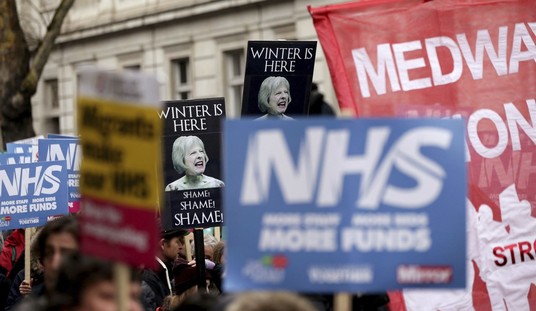Remember — what’s good for Wall Street is not always good for Main Street, and vice versa. Wall Street took a bit of a dive this morning on news that core inflation indicators came in stronger than expected. The consumer price index rose 0.5%, showing price increases across the board, which raises the probability that the Fed will tighten the money supply with a rate increase.
But why did inflation expand faster than expected?
Consumer prices jump much more than forecasted from CNBC.
The Consumer Price Index rose 0.5 percent last month against projections of a 0.3 percent increase. Excluding volatile food and energy prices, the index was up 0.3 percent against estimates of 0.2 percent.
The Labor Department indicated that price pressures were “broad-based,” with rises in gasoline, shelter, clothing, medical care and food.
Markets reacted sharply to the news, reversing earlier gains and indicating a lower open as Dow futures tumbled about 450 points from their highs. Government bond yields also turned higher, with the benchmark 10-year note most recently trading at 2.88 percent, a gain of about three and a half basis points.
It’s almost certain that the Fed will increase rates anyway as they try to move away from the free-money policies of the Obama era. Despite gains on Wall Street during those years, inflation remained curious absent — as did dynamic growth. That’s the element that has been added to the US economy, as CNBC points out:
“Faster economic growth over most of the past year has tightened labor and product markets and helped to boost prices at a faster pace,” David Berson, chief economist at Nationwide, said in a note. “We expect real GDP growth this year to be around 3 percent — faster than trend and supportive of higher inflation.”
The US has not had an annual growth rate of 3% since 2005, according to official BEA reports. We came close in 2015 with the best annual growth rate in the post-Great Recession era, 2.9%, but fell back to 1.5% in 2016. The 2015 apex was driven by a 3.6% growth rate in personal consumption expenditures (consumer spending), but that was the only year in which PCEs exceeded 3%. Consumers did not show much confidence in the economy, in large part because wages had been stagnant throughout the period.
Now, however, wages have moved sharply upward, and increased consumption has helped push prices higher. That’s important context, CNN Money’s Patrick Gillespie notes:
U.S. inflation came in at 2.1% in January compared with a year earlier, another sign that wages are rising for workers. The rise in consumer prices was higher than economists expected.
In the big picture, it’s a welcome sign that reflects the health of the economy. Wages and prices have been stagnant for years following the Great Recession, even as unemployment has fallen and millions of jobs have been created added. … A report earlier this month showed wages rose in January at the fastest pace since 2009.
What does this mean? Credit will become a little tighter, thanks to the higher interest rates, but it also means that the Fed can return to its more traditional role of balancing the money supply to act as a brake on inflation. The Fed has a long, long way to go before credit will become truly expensive, but running for years at an effective zero rate left them no flexibility at all. Those of us who lived through ruinous inflation in the 1970s and early 1980s might have acid flashbacks to that era, where inflation rates skyrocketed along with interest rates, but this report is as far from the Jimmy Carter-era “misery index” as today’s US economy is from Zimbabwe’s or Venezuela’s.
This is further confirmation that the economy really has finally gotten back on track. And as Salena Zito wrote yesterday, it’s also further confirmation that Democrats have a huge problem in 2018 — and it wears 4-inch heels:
A $1,000 bonus is not a crumb, and neither is an extra $100 per paycheck. As Democrats were supposed to spend their week fine-tuning their message at their party retreat, they had to face some hard truths about the face of the Party. Pelosi is out of touch with people who live outside of her San Francisco district and Washington, D.C.
Most of the people who live in the more than 100 House districts the Democratic Congressional Campaign Committee is targeting are happy with their crumbs, don’t see the connection between immigrants who are in the country illegally and a budget deal, couldn’t afford Pelosi’s high heels anyway and, so far, don’t see Armageddon on the horizon.
No one thing or person moves the needle more for Republicans than House Minority Leader Pelosi. Place her in a head-to-head focus group against Trump in a congressional swing district currently held by a Republican and Trump comes out on top every time.
That just hurts Democratic candidates.
In this case, they get what they deserve. House Democrats should have given her the boot seven years ago, and it’s probably too late to undo the damage Pelosi had wreaked in this cycle already. Main Street has caught onto her charade, and Wall Street is still doing well enough under Trump to let Pelosi and the Democrats twist in the wind.








Join the conversation as a VIP Member